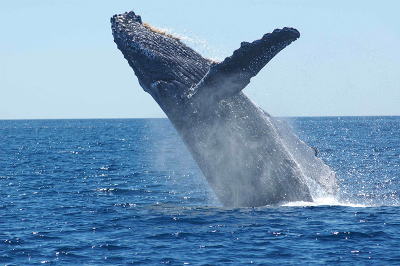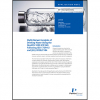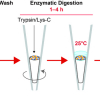
You may be surprised to hear that it’s not easy to do pregnancy tests on whales. For decades, the only way scientists could count pregnant females was by sight and best guesses based on visual characteristics. For the last several years, researchers have relied on hormone tests of blubber collected via darts, but the results were often inconclusive, and researchers couldn’t confidently say if the animal was pregnant or just ovulating. Research from the National Institute of Standards and Technology (NIST) and Australia’s Griffith University points to a weakness of that testing and provides a new method for hormone testing that offers better results.
“Previous tests only looked at progesterone in blubber samples”, said Ashley Boggs, a research biologist at NIST who helped to develop the new tests. “We found that androgens, and especially androstenedione in combination with progesterone, are much more likely to be a reliable marker of pregnancy.”
“Up to this point, most measurements had been conducted using immunoassays, which require a ‘one at a time’ approach to hormone measurements”, Boggs said. “We know that hormones act together in suites to cause large physiological changes. If you focus on only one hormone at a time, you might miss the major hormone of interest or simply run out of money or samples.”
The research team studied female humpbacks along the east coast of Australia during two stages of migration. Fifty-two individuals were randomly sampled before reaching the calving grounds in June/July (austral winter) and again after departing the calving grounds in September/October (austral spring). Before reaching the calving grounds, only one had a high concentration of progesterone, the hormone that has previously been used as an indicator of pregnancy in this species. This number seemed too low to be reliable. The evidence indicated that the animals’ hormone profiles change in late pregnancy, since multiple calves were seen later.
Finding chemical indicators for pregnancy in marine mammals is very different from finding them in humans, where a protein hormone, human chorionic gonadotropin (hCG), is detected right after the implantation of the embryo. Other protein hormones are difficult to use as a standard indicator for pregnancy because their levels vary from one species to the other. Previous whale reproductive research had relied on the measurement of the hormone progesterone using an ELISA test. ELISA has been the “go to” assay for years, but NIST scientists have determined that not all species rely on the same hormones during pregnancy, and in addition, some species’ hormone levels exhibit significant shifts during different phases of the gestation process.
NIST researchers realised that mass spectrometry would potentially allow the measurement of many hormones simultaneously and could help biologists to understand which hormones can be found at different stages of pregnancy. The new analysis from NIST and Griffith University scientists allowed the gathering of a simultaneous measurement of 11 steroid hormones in each sample of whale blubber using LC-MS/MS.
“By casting a wider net and looking for more hormones, we were able to get a better set of biomarkers,” said Boggs. The same technique will also likely be applicable to other species including North Atlantic right whales, which are dying at alarming rates and considered to be a species in peril.
This work was reported in Scientific Reports.




![Targeted proton transfer charge reduction (tPTCR) nano-DESI mass spectrometry imaging of liver tissue from orally dosed rat (Animal 3). a) optical image of a blood vessel within liver tissue. b) Composite ion image of charge-reduced haeme-bound α-globin (7+ and 6+ charge states; m/z 2259.9 and m/z 2636.3 respectively, red) and the charged-reduced [FABP+bezafibrate] complex (7+ and 6+ charge states; m/z 2097.5 and m/z 2446.9 respectively, blue). c) Ion image composed from charge-reduced haeme-bound α-globin (7+ and 6+ charge states) showing abundance in blood vessels. d) Ion image composed from charge-reduced [FABP+bezafibrate] complex (7+ and 6+ charge states) showing abundance in bulk tissue and absence in the blood vessel. Reproduced from https://doi.org/10.1002/ange.202202075 under a CC BY licence. Light and mass spectromert imaging of tissue samples](/sites/default/files/styles/thumbnail/public/news/MSI%20drug-protein%20complex-w.jpg?itok=CBNIjyYl)




